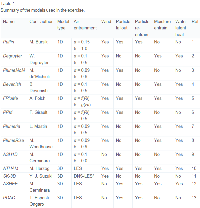Results of the eruptive column model inter-comparison study
Costa A., Y.J. Suzuki, M. Cerminara, B.J. Devenish, T. Esposti Ongaro, M. Herzog, A.R. Van Eaton, L.C. Denby, M. Bursik, M. de’ Michieli Vitturi, et al.
Journal of Volcanology and Geothermal Research, 326, pp. 2–25, http://dx.doi.org/10.1016/j.jvolgeores.2016.01.017.
Abstract
This study compares and evaluates one-dimensional (1D) and three-dimensional (3D) numerical models of volcanic eruption columns in a set of different inter-comparison exercises. The exercises were designed as a blind test in which a set of common input parameters was given for two reference eruptions, representing a strong and a weak eruption column under different meteorological conditions. Comparing the results of the different models allows us to evaluate their capabilities and target areas for future improvement. Despite their different formulations, the 1D and 3D models provide reasonably consistent predictions of some of the key global descriptors of the volcanic plumes. Variability in plume height, estimated from the standard deviation of model predictions, is within ~ 20% for the weak plume and ~ 10% for the strong plume. Predictions of neutral buoyancy level are also in reasonably good agreement among the different models, with a standard deviation ranging from 9 to 19% (the latter for the weak plume in a windy atmosphere). Overall, these discrepancies are in the range of observational uncertainty of column height. However, there are important differences amongst models in terms of local properties along the plume axis, particularly for the strong plume. Our analysis suggests that the simplified treatment of entrainment in 1D models is adequate to resolve the general behaviour of the weak plume. However, it is inadequate to capture complex features of the strong plume, such as large vortices, partial column collapse, or gravitational fountaining that strongly enhance entrainment in the lower atmosphere. We conclude that there is a need to more accurately quantify entrainment rates, improve the representation of plume radius, and incorporate the effects of column instability in future versions of 1D volcanic plume models.
http://www.sciencedirect.com/science/article/pii/S0377027316000366


